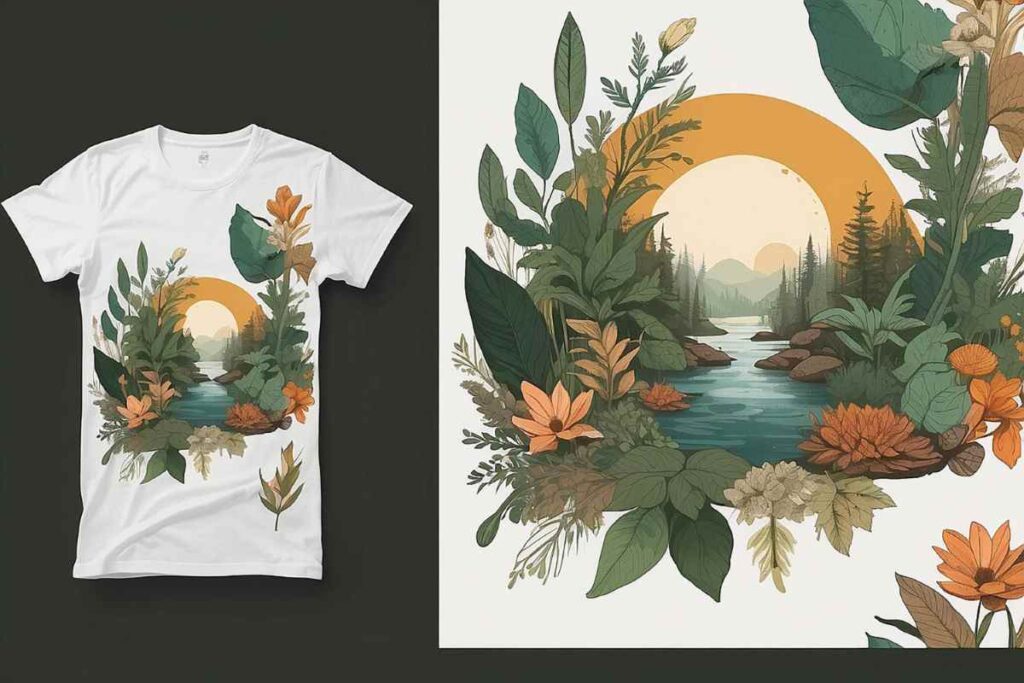DTF Transfers, or Direct-to-Film printing, represent a groundbreaking shift in the realm of custom apparel printing. This dynamic technique utilizes advanced DTF technology to transfer designs onto garments with remarkable precision and vibrancy. As print shop innovations continue to unfold, DTF printing benefits stand out for their cost-efficient nature and adaptability to various fabric types. Not only does this method allow for high-quality, detailed prints, but it also meets the increasing demand for personalized and unique apparel. In this guide, we will delve into the essentials of DTF transfers and explore why integrating this state-of-the-art technology is crucial for modern print shops.
When discussing DTF Transfers, one might also encounter terms like Direct-to-Film printing, custom garment transfers, or film-based printing. This innovative approach harnesses contemporary printing techniques to deliver striking designs directly onto fabric, setting a new standard in the printing industry. With a focus on customization and flexibility, methods like film transfer printing enhance the capabilities of print shops, enabling them to respond effectively to diverse customer needs. As businesses transition toward more personalized options in apparel decoration, embracing DTF technology offers a reliable path for sustained growth and success. In this article, we will explore the transformative impact of these advanced printing solutions.
Understanding DTF Technology: A Deep Dive
Direct-to-Film (DTF) technology is revolutionizing the fabric printing sector by offering unmatched versatility and quality. Unlike traditional methods, DTF printing uses a unique process where images are printed onto a specialized film that can then be heat transferred onto various fabrics. This method allows for exceptional color vibrancy and detail, making it ideal for custom apparel projects where aesthetic appeal is paramount. With DTF, print shops can easily cater to diverse client needs, from individual consumer designs to bulk orders.
Moreover, the DTF process accommodates a range of materials—be it cotton, polyester, or blends—ensuring that print shops can meet the demands of their clientele. This capability not only enhances the variety of products available but also positions DTF technology as a cornerstone in the evolving landscape of custom apparel printing. By embracing DTF, print shops can set themselves apart in a competitive market, offering unique and customizable solutions that resonate with consumers.
Exploring the Benefits of DTF Printing
DTF printing is undeniably advantageous for modern print shops, thanks to its exceptional print quality and flexibility. Print quality is a critical factor in customer satisfaction, and DTF transfers produce strikingly vibrant colors while ensuring that intricate designs and fine details are captured with precision. This level of quality is often superior to traditional methods such as screen printing, making DTF an attractive option for shops aiming to elevate their offerings.
Additionally, one of the major benefits of DTF technology is its compatibility with a vast array of substrates. Print shops can print on everything from light and dark fabrics to various textiles, expanding their service scope significantly. This flexibility aligns well with the growing consumer trend towards customization, providing businesses with the tools they need to meet increasing demand for personalized fashion items.
Cost-Effectiveness: The Key to DTF Transfers
One of the most appealing aspects of DTF transfers is their low setup costs, which present a significant advantage for print shops—particularly for those new to the industry or operating on a smaller scale. Traditional methods like screen printing often entail high initial investments due to the need for multiple screens and extensive setup time for each color. In contrast, DTF allows for quick and economical production of designs, making it easier for shops to take on smaller orders without compromising their finances.
This cost-effectiveness is especially beneficial for custom apparel businesses that respond to seasonal trends or niche markets. With DTF, print shops can swiftly pivot their offerings based on fluctuating demand, thereby reducing the risk associated with larger production runs.
Durability of DTF Prints: A Competitive Edge
The durability of prints made using DTF technology is another aspect that sets it apart from traditional printing methods. DTF transfers are well-known for their resilience, allowing apparel to withstand frequent washing and wear without losing their vibrancy or detail. For customers investing in clothing items, the longevity of the print is crucial, making them more likely to return for repeat business.
This durability not only enhances customer satisfaction but also contributes to the reputation of a print shop. By offering products that maintain their quality over time, businesses can cultivate a loyal customer base, which is invaluable in the competitive custom apparel market.
The Growing Market for DTF Printing
As the demand for personalized apparel continues to rise, the market for DTF printing is expanding rapidly. Print shops that incorporate this technology are seeing marked increases in efficiency and customer satisfaction, propelling them ahead in a competitive environment. By embracing DTF transfers, print shops can respond effectively to the growing consumer trend towards customization, fulfilling unique client requests while streamlining their production processes.
The broader acceptance of DTF technology indicates a shift in industry standards. Many businesses are now recognizing the advantages of DTF printing, which translates into an increasingly competitive landscape. As innovations in DTF technology evolve, print shops that leverage these advancements will likely position themselves as industry leaders.
Future Innovations in DTF Printing Technology
Looking towards the future, advancements in DTF printing technology promise to further enhance the appeal of this innovative method. Reports indicate innovations in ink formulations and printer capabilities, which aim to increase print speeds and improve the overall efficiency of the printing process. Such enhancements are crucial as print shops strive to keep pace with the demands of a fast-evolving market.
Moreover, as more environmentally conscious practices take hold in consumer behavior, DTF printing’s water-based inks align well with this trend. These developments not only address the industry’s need for growth and adaptation but also solidify DTF’s role as a sustainable option in custom apparel printing. Ultimately, the future of DTF printing looks promising, with continuous innovations likely to maintain its upward trajectory.
Frequently Asked Questions
What are DTF Transfers and how do they work in printing?
DTF Transfers, or Direct-to-Film transfers, involve printing designs onto a special film, which is then transferred to garments using heat. This method uses water-based inks that bond well with various fabric types, offering a flexible and high-quality printing solution.
What are the benefits of using DTF printing for custom apparel?
DTF printing provides numerous benefits for custom apparel, including vibrant color reproduction, intricate detail retention, flexibility across various fabric materials, low setup costs, and high durability. These advantages make DTF Transfers an ideal choice for print shops aiming to deliver quality and customization.
How does DTF technology compare to traditional printing methods?
DTF technology surpasses traditional printing methods like screen printing by offering better print quality, versatility in fabric compatibility, and lower startup costs. It allows for quick production of complex designs without extensive setup, making it a game-changer for print shops.
Can DTF Transfers be applied to all types of fabrics?
Yes, DTF Transfers are compatible with a wide range of fabrics, including cotton, polyester, and blends. This flexibility enables print shops to cater to diverse customer needs and provide a variety of customized apparel options.
What should I consider when adopting DTF printing technology in my print shop?
When adopting DTF printing technology, consider factors like your current equipment, the cost of new DTF printers, ink quality, and the types of fabrics you plan to work with. It’s essential to assess how DTF Transfers can enhance your offerings and meet market demands.
What advancements are being made in DTF printing technology?
Recent advancements in DTF printing technology include faster print speeds, improved ink formulations, and better printer capabilities. These innovations are vital for print shops striving for efficiency and quality, positioning DTF Transfers as a leading choice in the future of apparel printing.
| Key Points | Details |
|---|---|
| What is DTF Printing? | DTF (Direct-to-Film) printing involves printing designs onto a special film that is then transferred to garments using heat, utilizing water-based inks suitable for various fabrics. |
| Advantages of DTF Transfers | DTF offers high quality, flexibility across materials, low setup costs, and durability that make it ideal for print shops. |
| High Quality and Detail | DTF printing delivers superior print quality with vibrant colors and intricate details compared to traditional methods. |
| Flexibility Across Materials | Compatible with a wide range of fabrics including cotton and polyester. |
| Low Setup Costs | Lower barriers to entry compared to screen printing, ideal for short-run projects. |
| Durability | DTF prints can withstand many washes without losing quality. |
| Market Adoption and Popularity | Growing rapidly among print shops, meeting increasing demand for personalized products. |
| Growth and Future Prospects | Predicted growth in DTF market, with innovations enhancing efficiency and sustainability. |
| Recent Developments | Technological advancements leading to faster print speeds and improved ink formulations. |
Summary
DTF Transfers are transforming the print industry by providing print shops with unparalleled quality, flexibility, and cost-effectiveness. As a game-changing technology, DTF printing enhances the capabilities of print shops, enabling them to meet the diverse demands of their customers while maintaining competitive pricing. With the potential for increased customization and an environmentally-friendly approach, DTF printing is set to dominate the future of apparel decoration, making it an essential investment for any print business looking to thrive.


